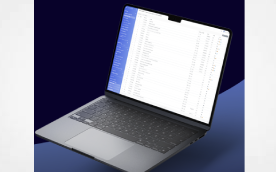Technology continues to revolutionize various aspects of our lives, and one significant area where its impact is increasingly felt is in the legal system. Specifically, advancements in technology are streamlining and enhancing the preparation process for court hearings.
From case management software to virtual hearings, here’s a look at how technology is making life easier for legal professionals and litigants alike.
Case Management Software
Gone are the days of sifting through mountains of paperwork and files. Modern law firms and legal departments now rely on sophisticated case management software to organize and manage case-related information efficiently. These platforms offer features such as document management, task scheduling, contact management, and calendaring—all in one centralized system. This not only saves time but also reduces the chances of errors that can arise from manual record-keeping.
Case management software allows legal teams to access pertinent case details instantly, collaborate seamlessly with colleagues, and communicate effectively with clients. This level of organization ensures that attorneys can devote more time to strategizing and preparing for court hearings rather than being bogged down by administrative tasks.
Digital Evidence Presentation
Technology has transformed the way evidence is presented in courtrooms. Digital evidence, such as emails, text messages, videos, and photographs, can now be easily compiled, stored, and presented using specialized software. This not only simplifies the process of gathering evidence but also enhances its visual impact during hearings.
Platforms designed for digital evidence presentation often include tools for annotating documents, creating timelines, and highlighting key points, making it easier for attorneys to present their case clearly and persuasively. Judges and jurors can also benefit from this technology, as it facilitates a more interactive and engaging courtroom experience.
Remote Court Hearings
One of the most significant advancements catalyzed by technology is the advent of remote court hearings. Particularly accelerated by the COVID-19 pandemic, virtual court proceedings have become commonplace in many jurisdictions around the world. Video conferencing technology allows attorneys, witnesses, and even judges to participate in hearings from different locations.
Virtual hearings offer numerous advantages, including reduced travel time and costs for all parties involved, increased scheduling flexibility, and improved access to justice for individuals in remote or underserved areas. Moreover, they have proven to be effective in maintaining court operations during emergencies and public health crises, ensuring continuity in the legal process.
Legal Research Tools
Access to comprehensive legal research databases has been revolutionized by technology. Gone are the days of spending hours in law libraries poring over volumes of books and journals. Today, legal professionals can conduct in-depth research using online databases and search engines specifically tailored for legal information.
These tools enable lawyers to quickly find relevant case law, statutes, regulations, and scholarly articles that strengthen their arguments and support their positions in court. Advanced search functionalities and AI-powered algorithms further refine the research process, delivering more precise results in less time.
Electronic Filing and Service
Traditional paper-based filing systems are gradually being replaced by electronic filing (e-filing) systems in many jurisdictions. E-filing allows legal documents to be submitted to the court electronically, eliminating the need for physical delivery and reducing the risk of misplaced or lost paperwork. Similarly, electronic service (e-service) enables attorneys to serve documents to opposing parties electronically, expediting the exchange of information between parties. In addition to this, electronic court bundle software is also making creating bundles for court a lot more streamlined.
These systems not only save time and resources but also enhance the overall efficiency of court proceedings. Attorneys can file documents outside of regular business hours, reducing procedural delays and ensuring compliance with court deadlines.
Collaboration and Communication Tools
Clear communication and effective collaboration are vitalelements of successful legal practice. Technology offers a plethora of tools—from secure messaging platforms to video conferencing applications—that facilitate real-time communication among legal teams, clients, and other stakeholders.
These tools enable attorneys to coordinate case strategy, provide updates to clients, and conduct virtual meetings with experts or witnesses, regardless of geographical location. Enhanced communication fosters teamwork and ensures that everyone involved in a case remains informed and aligned throughout the litigation process.
While embracing these technologies brings undeniable benefits, it is crucial for legal professionals to adapt to evolving practices and regulations governing their use. As technology continues to evolve, so too will its impact on courtroom procedures, promising further improvements in accessibility, transparency, and fairness within the justice system. By harnessing the power of technology, legal professionals can navigate the complexities of court hearing preparation with greater ease and confidence than ever before.




